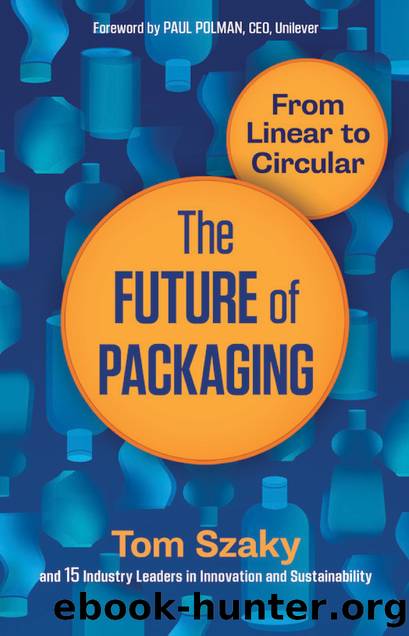The Future of Packaging by Tom Szaky

Author:Tom Szaky
Language: eng
Format: epub
Publisher: Berrett-Koehler Publishers
Published: 2019-07-14T16:00:00+00:00
Current Challenges and Trends of Business-Driven Action
Full disclosure: In 2008 Unilever’s factories sent 140,000 metric tons of nonhazardous waste to landfill—that’s the equivalent of 2 million waste bins, or 17 Eiffel Towers. Given what Uni-lever has since managed to achieve, it almost seems unreal that we have ever done things any other way. But as is the case for any company today, the first steps on the sustainability journey entailed coming to terms with the fact that the business-as-usual way of doing things was no longer working and needed to change. SEE 10.2
In addition to an ambitious target of using 100 percent reusable, recyclable, or compostable plastic packaging by 2025,1 Unilever set the important, pivotal goal of achieving zero nonhazardous waste to landfill2 by 2020. Zero-waste-to-landfill (ZWTL) is a business concept in which solid waste produced at respective facilities is not landfilled but instead is reused, recycled, composted, or disposed of via some other outlet. Some companies regard ZWTL as a guiding ideal rather than a benchmark,3 and many seek certification4 for visibility.
At the core of these programs are continuous improvement and constant evaluation about material choices. There is not a one-size-fits-all approach to reducing waste in factories, but a strong commitment to eliminating waste at the source is the preferred place to start. Optimizing manufacturing to prevent trimmings from production prevents the need for reverse logistics, the next preferred step for resource management.
Download
This site does not store any files on its server. We only index and link to content provided by other sites. Please contact the content providers to delete copyright contents if any and email us, we'll remove relevant links or contents immediately.
| Acoustics | Bridges |
| Earthwork Design | Environmental |
| Fire Science | Highway & Traffic |
| Hydrology | Remote Sensing |
| Seismic Design | Structural |
| Structural Dynamics | Surveying & Photogrammetry |
| Transportation |
Whiskies Galore by Ian Buxton(40293)
Introduction to Aircraft Design (Cambridge Aerospace Series) by John P. Fielding(32329)
Small Unmanned Fixed-wing Aircraft Design by Andrew J. Keane Andras Sobester James P. Scanlan & András Sóbester & James P. Scanlan(32135)
Craft Beer for the Homebrewer by Michael Agnew(17439)
Turbulence by E. J. Noyes(7031)
The Complete Stick Figure Physics Tutorials by Allen Sarah(6630)
Kaplan MCAT General Chemistry Review by Kaplan(6044)
The Thirst by Nesbo Jo(5778)
Bad Blood by John Carreyrou(5760)
Learning SQL by Alan Beaulieu(5399)
Weapons of Math Destruction by Cathy O'Neil(5029)
Man-made Catastrophes and Risk Information Concealment by Dmitry Chernov & Didier Sornette(4728)
iGen by Jean M. Twenge(4693)
Digital Minimalism by Cal Newport;(4509)
Life 3.0: Being Human in the Age of Artificial Intelligence by Tegmark Max(4492)
Audition by Ryu Murakami(4091)
1,001 ASVAB Practice Questions For Dummies by Powers Rod(4034)
Electronic Devices & Circuits by Jacob Millman & Christos C. Halkias(4019)
Pale Blue Dot by Carl Sagan(3995)
